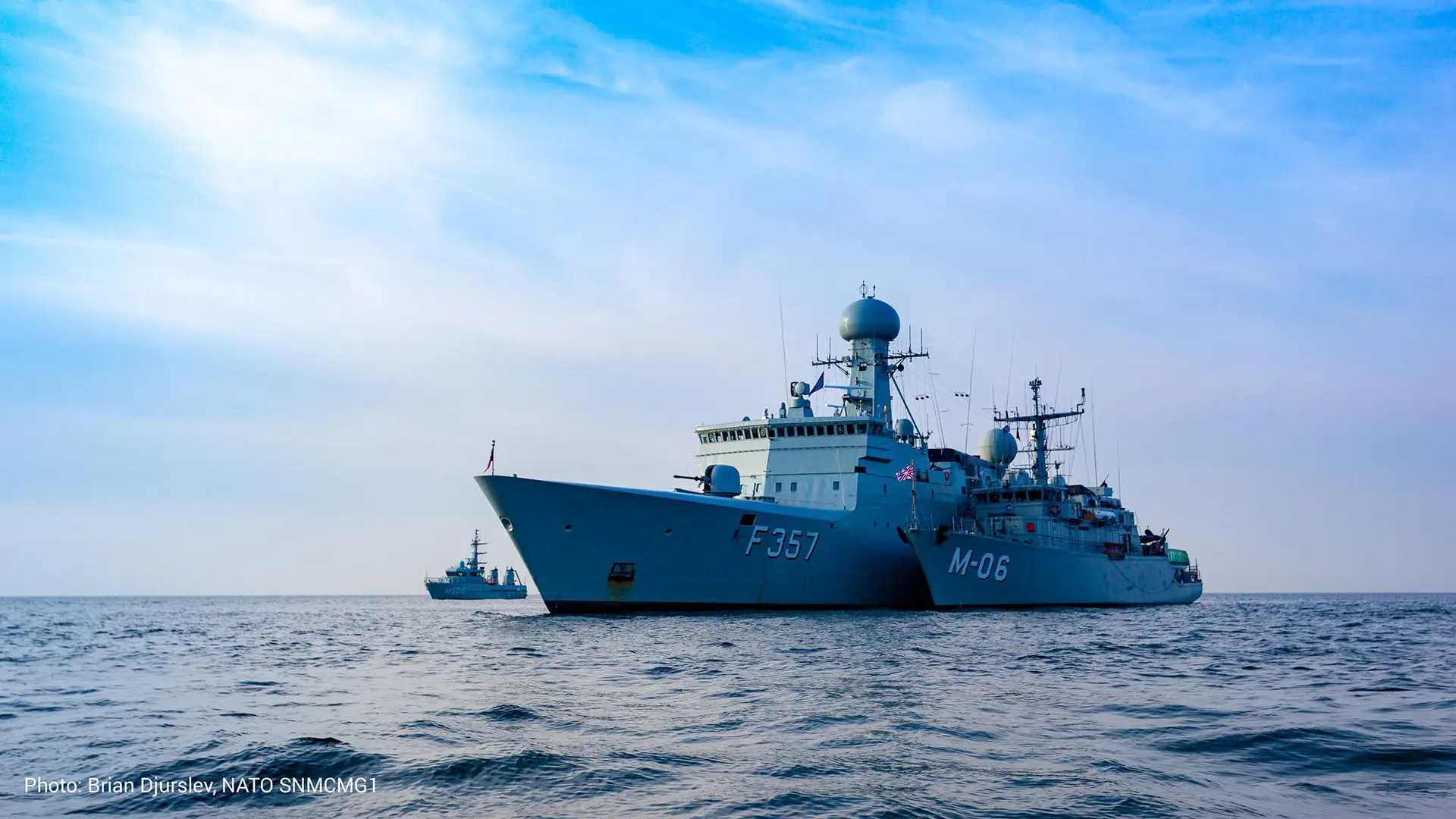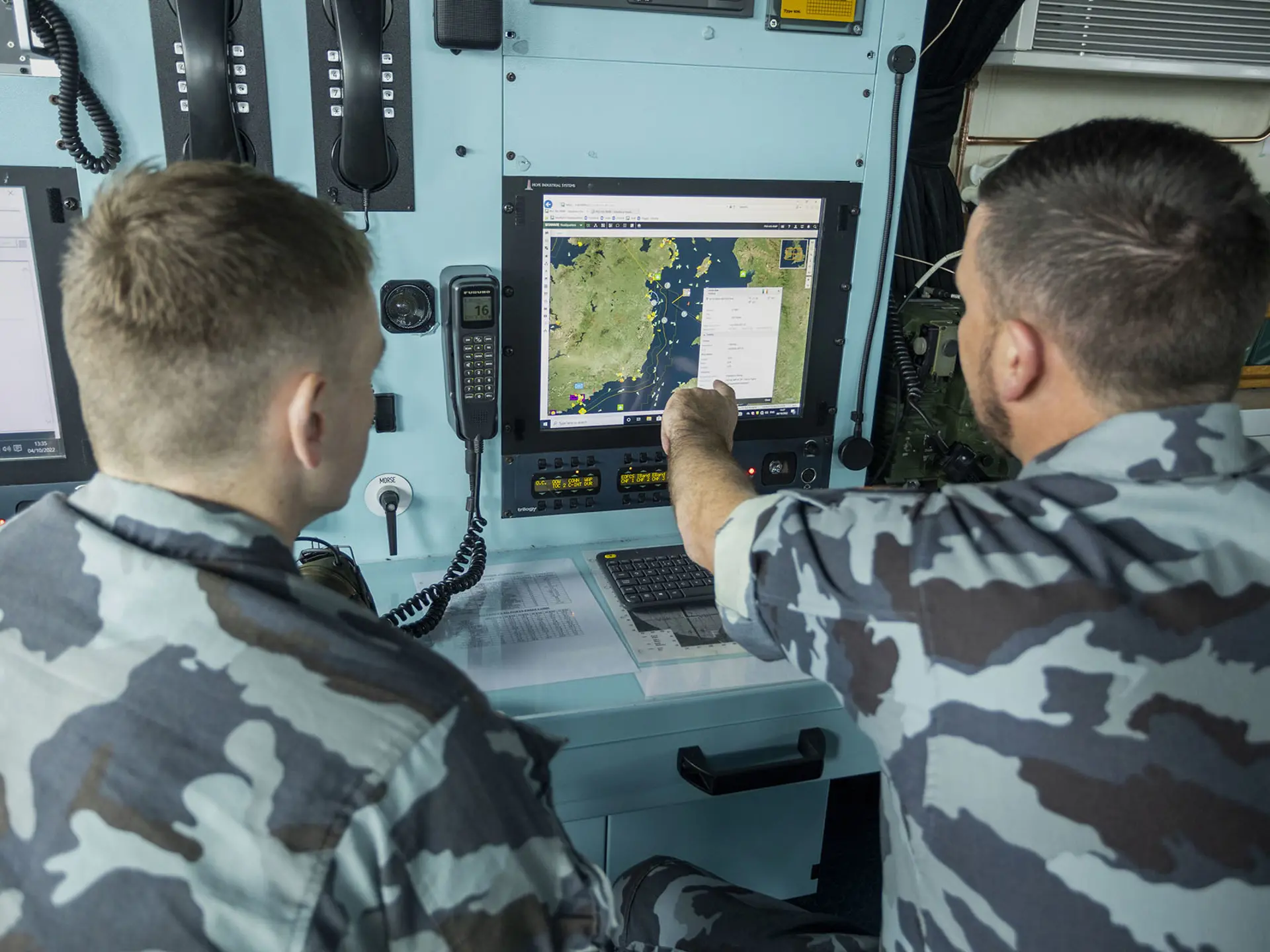Royal Danish Navy takes SitaWare onboard
The Royal Danish Navy (RDN) is benefitting from the advanced command-and-control (C2) and situational awareness (SA) capabilities brought by Systematic’s suite of SitaWare software solutions.
The RDN is introducing SitaWare Maritime throughout its fleet, as the Danish military moves to create a Joint Common Operational Picture (JCOP) across the land and maritime domains. The Royal Danish Army is already rolling out SitaWare at all levels of the battlefield.
Ultimately, SitaWare will be fitted on all classes of vessels in the RDN as well as at two shore-based sites.

According to Commander Karsten Horn, Branch Chief for Simulation and C4ISR at the RDN’s Warfare Centre, the goal is to produce “a true, valid, situational awareness picture.”
Speaking at the SitaWare User Forum 2018 in Stockholm, Cdr Horn noted that generating this SA picture is not without difficulty, with a variety of challenges to be overcome. This includes the wide range of systems, data sources, and standards to be integrated, not to mention the problem of sharing information across different security levels.
“Navies face challenges in exchanging data in the Joint environment because they often use different systems,” explained Stig Meyer, Product Manager and Maritime Domain Expert at Systematic, “SitaWare Maritime is a flexible and agile system that can easily be integrated with a range of other systems and accommodate a variety of protocols and formats.”
SitaWare Maritime: a multipurpose information sharing tool
The SitaWare suite will be used in numerous roles within RDN service, ranging from providing enhanced SA for coastal patrol operations to acting as a staff-level command-and-control (C2) tool on multinational operations.
The RDN’s Diana-class offshore patrol vessels (OPVs) have been equipped with SitaWare Maritime installed on laptop computers, and the system is networked with the service’s Joint Operations Centre (JOC) in Karup. The Diana-class vessels are largely tasked with the surveillance of inshore waters and search and rescue missions, and will be provided with an unclassified SA picture.
Cdr Horn noted that as these vessels were not built with a C4I installation, the RDN recognised that introducing an information sharing tool onboard would be beneficial. The inspiration for this system fit was drawn from the Irish Defence Forces, which employs SitaWare in a similar fashion on OPVs, Cdr Horn said.
The RDN is also experimenting with SitaWare Maritime on a Thetis-class frigate – installed on rigid-hull inflatable boats (RHIBs) operating together with the mother ship.
The Thetis-class is used extensively in Joint Arctic Command’s area of responsibility, where the vessels provide border patrol, fishery protection, and SAR capabilities, among others; Cdr Horn noted the vast area that they must cover – as much as 40,000 km2. In addition, Joint Arctic Command utilises a SitaWare server based in Greenland.
The SitaWare fit on the RHIBs will provide them with C2 and SA information when they conduct missions such as vessel boarding and will facilitate the transfer of information between the RHIB and its mother ship.
The RDN’s two largest ship classes – the Absalon-class command and support ship and Iver Huitfeldt-class frigates – both feature SitaWare Maritime as part of their NATO Secret Wide Area Network (NSWAN) fit, and the solution is for the most part employed to support the provision of a Recognised Maritime Picture, and in mission planning. On these vessels, the software operates on a NATO SECRET connection. SitaWare is under consideration to replace the aging Maritime Command and Control Information System.
SitaWare Maritime’s ability to interoperate in the Joint environment as part of a coalition is especially useful for the Absalon- and Iver Huitfeldt-class ships. For example, the versatile Absalon-class has undertaken a number of deployments as part of multinational missions, at present HDMS Esbern Snare is the flagship of NATO's Standing Maritime Group 1. The class’ multirole design enables it to conduct a wide range of missions, including delivering and supporting ground forces where, for example, a shared SA picture with the Danish Army could be a force multiplier.
Bringing together domains and sources
Indeed, Danish efforts are already underway to bring together the land and maritime operating environments with CWIX exercises used as testbed. One aim is to create an information flow between the domains, combining data from multiple sources with different standards, such as MIP, OTH-Gold, and NFFI, among others. Cdr Horn pointed to SitaWare’s ability to provide “out-of-the-box support for a number of civilian and military data feeds,” as an important enabler.
SitaWare Maritime's utility will also be stressed when the RDN becomes task group commander for the Standing NATO Mine Countermeasures Group 1 in 2019, the navy has planned to use the software as the staff C2 tool and will employ a multi-classification domain arrangement to ensure interoperability between the task group members.
Elsewhere, the RDN is introducing a number of significant upgrades to its large vessels, principally for Area Air Defence and Anti-Submarine Warfare (ASW).
The Iver Huitfeldt-class frigates are to be equipped with SM-2 area air-defence missiles, and preparatory work for the introduction of the more capable SM-6 missile system will commence. ASW enhancements will include new towed array sonars, torpedo countermeasure systems, and dipping sonars for the RDN’s helicopters.
The upgrades bring a step change in capability for the navy and will enable the service to have greater responsibilities for air defence and ASW within NATO, such as taking the lead in these roles for naval task groups.
“The new capabilities raise the possibility for the RDN to undertake taskings from the tactical to the Joint level,” noted Meyer, “An agile, versatile, and robust C2 system will be high on the list of requirements for the RDN and SitaWare Maritime is an ideal solution, given that it is operationally proven with a number of militaries and already installed across the fleet.”



